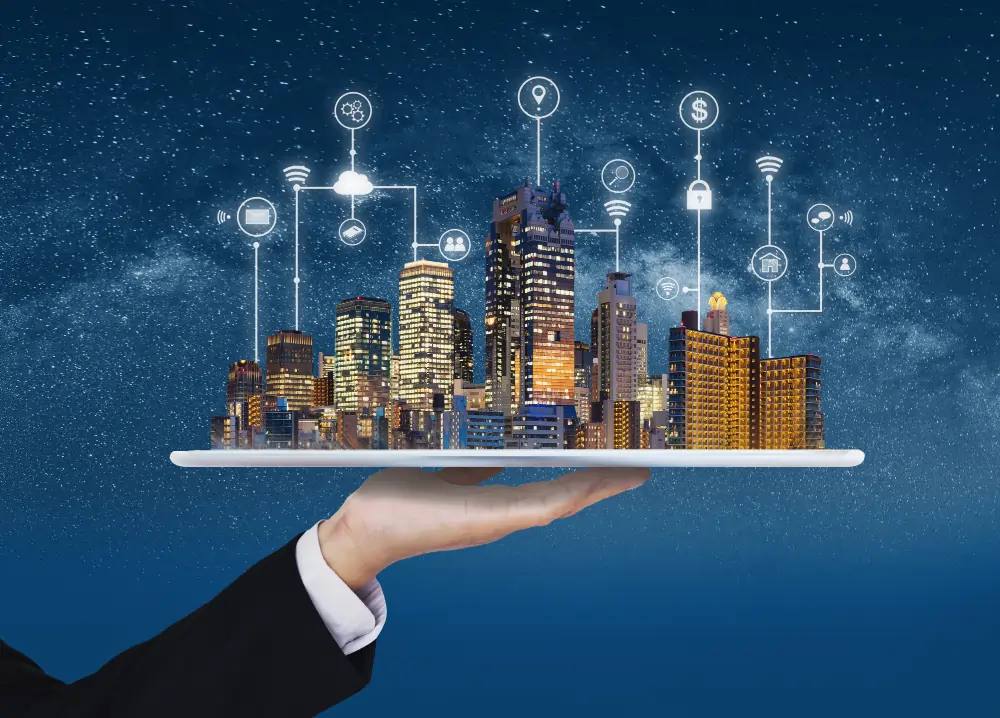The size of the global smart building market is projected to grow at a CAGR...


The world is growing to become more urban, and so is the trend of 'smart buildings.' This catchy terminology is all about combining technology with sustainability and efficiency. But what does the term "smart building" really denote? This blog covers the features of smart buildings, stating how they work, and how they offer immense benefits for people inhabiting them and property owners, too.
A smart building is not just any structure; it's an intelligent environment - one with advanced technology to optimize many operations. These buildings integrate various smart features that enhance occupants' comfort, improve energy efficiency, and facilitate management processes. By incorporating intelligent building systems, smart buildings will respond in real-time to changes in their ambient conditions, thus being responsive to the needs of their users.
Smart buildings have several key features that distinguish them from traditional structures. These include:
IoT is the backbone in making any conventional building a smart environment. It involves embedding sensors, cameras, and smart meters within the building to monitor various parameters such as temperature, humidity, occupancy levels, and energy consumption. This connectivity enables devices to communicate with each other with ease for automated responses whenever there is a change in the environment.
Sensors form one of the fundamental features of a smart building. While in operation, they constantly collect data on the environment around them and occupancy patterns. For example, motion sensors can deliver information about the number of people occupying a room at a certain period and turn on or off the lighting or HVACs. Actuators take commands from the BMS to operate physical systems such as heating, cooling, and ventilation.
The BMS works similarly to the central nervous system. It integrates all the subsystems into a single platform. This centralization makes it easier for building managers to monitor and control operations from one interface.
Another cornerstone of smart technology in buildings is data analytics. Advanced analytics tools churn through the extensive sensor data to detail trends and patterns. Such analytics give valuable insight into the performance of a building to managers for further optimization of operations, thereby enabling them to predict maintenance needs well in advance to avoid troubles.
A common signature of smart buildings is automation. Automated controls adjust settings based on real-time data input. If a room is not occupied beyond a certain period of time, the system can automatically turn off lights and adjust temperature settings to save energy. This not only enhances comfort for occupants but also reduces energy consumption significantly.
Understanding how smart buildings work involves understanding the interaction between technology and user experience:
1. Data Collection : Sensors embedded in the building continuously collect data on various factors such as occupancy levels, temperature fluctuations, air quality, and energy usage.
2. Data Processing : The captured data is routed to a central hub where, using AI algorithms, it is put to analytical action. It also helps estimate probable inefficiency or problems that arise in the building systems.
3. Automated Responses : This would, therefore, let building systems make automatic adjustments like turning off lights in unmanned rooms or setting up the optimum settings for HVAC depending upon the level of occupancy.
4. User Interaction : Users could interact with such a system via their mobile phones to tailor the environment to personal preferences.
5. Continuous Improvement : In essence, the more varied the input of new data over time, the more the system will adapt and further optimize operations, moving continuously toward the objective of greater comfort and efficiency.

The implementation of smart building technology offers a lot of advantages by which operational efficiencies and occupant satisfaction can be improved simultaneously.
From an energy consumption point of view, one of the significant benefits of smart buildings is that they can reduce consumption significantly when compared with conventional structures. Fitted with suitable sensors providing real-time inputs, it is possible to optimize the HVAC and lighting systems properly.
Reduced energy consumption means lower utility bills for property owners and tenants alike. In addition, predictive maintenance capabilities also help prevent costly repairs by addressing issues before they become major headaches.
Smart buildings are designed to enhance occupant comfort through the option of personalized setting of environmental preferences like lighting and temperature. This helps increase productivity at work and other places, making occupants stay in a comfortable space.
Security is also enhanced with intelligent building systems like surveillance cameras with AI that can recognize anomalies or attempts at unauthorized access in real-time. Integrated access control systems provide added safety and manage who goes where within the building.
By reducing energy use and tapping into renewable energy sources whenever feasible—such as solar panels or wind turbines—smart buildings go a long way in the environmental sustainability mission.
Properties with smart technologies are more attractive to tenants or buyers because of the modern amenities and operational efficiencies. This demand can drive property values higher over time.
Intelligent building systems are all the technologies integrated into smart buildings that work together to create an efficient environment. These include:
Smart buildings epitomize the future of architecture and urban development, wherein technologies converge not only for operational efficiency but also for enhancing the quality of life for occupants, considering resource consumption. By embracing the development of smart building technologies, we will further see an increase in efficiency, comfort, safety, and sustainability.
The size of the global smart building market is projected to grow at a CAGR...